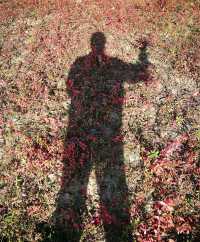The 16th to 20th caves in the Datong Yungang Grottoes Scenic Area are the earliest caves opened in Yungang. Because it is the famous high monk and the scorpion preside over the construction, it is called the "Wu Grottoes". This is the first phase of the project of Yungang Grottoes. The center of the five grottoes is carved with huge statues of Buddha, symbolizing the five emperors of the Northern Wei and Wu Dynasty. The main dignitaries of the caves of the 'Five Grottoes' are: the 16th Grotto is the Buddha statue of the fearless seal, the 17th Grotto is the Buddha statue of the foot, the 18th Grotto is the Buddha statue of the fearless seal, and the 20th Grotto is the Buddha statue of the Zen-printed seal. The Wu Grottoes reflect the special Buddhist culture of the early Northern Wei Dynasty, and the five Buddhas represent the Buddha while also symbolizing the specific emperor individual. This particular Buddhist image never appeared in India or other advanced Buddhist areas, and the excavation of the Wu Grottoes reveals the creation of "Chinese Buddhism" unlike Indian Buddhism.
;
Tanyao Five Grottoes Review
4.9 /527 Reviews
Popular Destinations
Pingyao Travel | Koh Samui Travel | Chaozhou Travel | Ipoh Travel | Weihai Travel | Davao Travel | Hakone Travel | Osaka Prefecture Travel | Nagoya Travel | Torre del Greco Travel | Zhujiajiao Ancient Town Travel | Narita Travel | New Zealand Travel | Phu Quoc Island Travel | Neijiang Travel | New Haven Travel | Zagreb Travel | Cairo Travel | Cape Town Travel | Itapema Travel | Hartford Travel | Lahn-Dill-Kreis Travel | Boone County Travel | Gatineau Travel | Lushan Travel | Oakland Travel | Slagelse Travel | Kawagoe Travel | Carlsbad area Travel
Recommended Attractions at Popular Destinations
Bangkok attraction near me | Manila attraction near me | Tokyo attraction near me | Hong Kong attraction near me | Seoul attraction near me | Taipei attraction near me | Los Angeles attraction near me | New York attraction near me | Shanghai attraction near me | Kuala Lumpur attraction near me | Shenzhen attraction near me | Osaka attraction near me | London attraction near me | Singapore attraction near me | Guangzhou attraction near me | San Francisco attraction near me | Beijing attraction near me | Macau attraction near me | Bali attraction near me | Paris attraction near me | Orlando attraction near me | Jakarta attraction near me | Ho Chi Minh City attraction near me | Chicago attraction near me | Phuket attraction near me | Toronto attraction near me | Istanbul attraction near me | Cebu attraction near me | Dallas attraction near me | Seattle attraction near me
Popular Attractions
Merlion Park | Christin Massage | Phillip Island Nature Parks | Singapore River | Universal Studios Singapore | Sydney Zoo | Mount Fuji | Edinburgh Castle | Singapore Zoo | Fairy Mountain National Forest Park | Adventure Cove Waterpark | Nanyang Technological University | Hong Kong Macau Ferry Terminal | Adventure Waterpark Desaru Coast | Chengdu Research Base of Giant Panda Breeding | Pantai Sirungkungan | Risshokoseikai Tsukyokai | Impasug-ong Covered Court | Church of Saint Richard | Ambarde dam | Jardins familiaux du Mont-Bart | Phinisi Ambasi | St Anthony of Padua Church | Cape Ann Museum Green | 영주 관사골 (Yeongju Gwansagol Street) | Sunway Lagoon Theme Park | Statue of Liberty | Cheonggyecheon, Seoul | Similan Islands | Shanghai Maglev Train
Popular Travelogues
Bangkok Travelogue | Tokyo Travelogue | Hong Kong Travelogue | Seoul Travelogue | Los Angeles Travelogue | New York Travelogue | Shanghai Travelogue | Kuala Lumpur Travelogue | Shenzhen Travelogue | Osaka Travelogue | London Travelogue | Singapore Travelogue | Guangzhou Travelogue | San Francisco Travelogue | Beijing Travelogue | Macau Travelogue | Bali Travelogue | Paris Travelogue | Orlando Travelogue | Ho Chi Minh City Travelogue | Chicago Travelogue | Phuket Travelogue | Toronto Travelogue
Popular Ranked Lists
Top 5 Fine Dining in Quanzhou | Popular Family-friendly Attractions Near Yifeng | Popular Family-friendly Attractions Near Cangwu | Top 6 Bars in Honolulu | Popular Family-friendly Attractions Near Yingshan | Popular Local Restaurants in George Town | Popular Luxury Hotels in Alexandria Governorate | Popular Family-friendly Attractions Near Zichang | Popular Premium Hotels in Ballymena | Popular Family-friendly Attractions Near Suixian | Popular Luxury Hotels Near Saint-Tropez | Popular Family-friendly Attractions Near Kezuozhongqi | Popular Family-friendly Attractions Near Longhui | Popular Family-friendly Attractions Near Anping | Top 5 Fine Dining in Foshan | Popular Family-friendly Attractions Near Jinggangshan | Popular Premium Hotels in Estoril | Popular Family-friendly Attractions Near Liangcheng | Popular Luxury Hotels Near Koh Yao Yai | Popular Family-friendly Attractions Near Yu County | Top 4 Fine Dining in Hefei | Popular Family-friendly Attractions Near Xinbaerhuzuoqi | Popular Family-friendly Attractions Near Hegang | Popular Fine Dining in London | Popular Fine Dining in Taipei | Top 6 Fine Dining in Santorini | Popular Family-friendly Attractions Near Jingzhou | Popular Family-friendly Attractions Near Jingan | Popular Luxury Hotels Near Covas do Douro
Payment Methods
Our Partners
Copyright © 2024 Trip.com Travel Singapore Pte. Ltd. All rights reserved
Site Operator: Trip.com Travel Singapore Pte. Ltd. Travel License No. 02943
Site Operator: Trip.com Travel Singapore Pte. Ltd. Travel License No. 02943




















